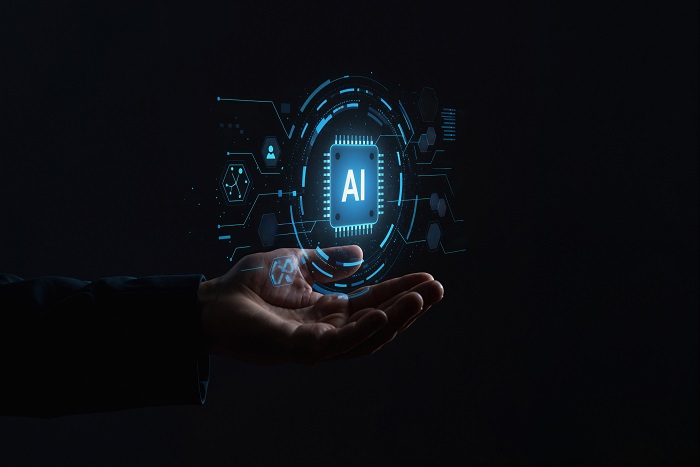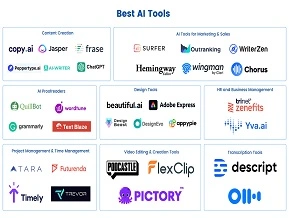Data Science and AI: What’s the Difference and How Do They Work Together?
What is the Core Difference Between Data Science and AI?
Data science and AI are two interconnected yet distinct fields that play a crucial role in today’s data-driven world. Understanding the core difference between them is essential for professionals, businesses, and learners aiming to harness their full potential.
Data Science: Extracting Meaning from Data
Data science is a multidisciplinary field focused on extracting insights and knowledge from data using scientific methods, algorithms, and systems. It involves collecting, processing, analysing, and interpreting large volumes of structured and unstructured data. Key techniques in data science include statistical analysis, data mining, predictive modeling, and data visualization. The primary goal is to generate actionable insights that inform business decisions or solve complex problems. Data science draws heavily from fields such as mathematics, statistics, and computer science.
Artificial Intelligence: Mimicking Human Intelligence
Artificial intelligence (AI) refers to the development of machines and systems capable of performing tasks that typically require human intelligence. These tasks include learning, reasoning, and problem-solving, understanding natural language, and recognizing patterns. AI encompasses various subfields like machine learning, deep learning, and computer vision. Its primary focus is on creating intelligent agents that can adapt and make decisions based on data.
How They Relate – and Differ
While AI in data science is a powerful tool used for tasks such as predictive analytics and automation, data science is a broader field. AI is just one component within the data science toolkit, alongside statistics, traditional programming, and data engineering techniques. However, AI is also a standalone discipline with its own set of goals and methods that extend beyond the realm of data science.
In essence, data science seeks to interpret data, while AI aims to replicate human intelligence—two goals that often overlap but are not the same.
How Does AI Fit into the Broader Framework of Data Science?
Data science and AI are deeply interconnected, with AI serving as a vital component within the broader data science ecosystem. While data science encompasses the entire process of collecting, processing, analysing, and interpreting data, AI enhances this process by introducing intelligent automation and advanced predictive capabilities.
AI for Predictive Analytics and Automation
One of the most valuable uses of AI in data science is predictive analytics. Machine learning (ML), a subfield of AI, allows data scientists to build models that can predict future outcomes based on historical data. These models are widely used in applications such as sales forecasting, customer churn prediction, and fraud detection. AI also supports automation, enabling systems to make data-driven decisions without human intervention, increasing speed and efficiency.
Common AI Techniques in Data Science Projects
AI techniques such as supervised and unsupervised learning, neural networks, decision trees, and natural language processing (NLP) are frequently applied in data science projects. These tools help data scientists discover complex relationships in data, automate repetitive tasks, and solve problems that are difficult to address with traditional methods.
Enhanced Pattern Recognition and Forecasting
AI significantly improves pattern recognition and anomaly detection by identifying hidden trends and outliers that human analysts or standard statistical techniques might overlook. This capability is especially useful in industries like finance, healthcare, and cybersecurity, where early detection of irregularities is critical. AI also strengthens forecasting models, allowing for more accurate and timely business insights.
AI-Powered Decision-Making
AI models assist organizations in making smarter decisions by analysing vast datasets quickly and providing clear, data-backed recommendations. For example, recommendation engines, chatbots, and real-time risk assessments all rely on AI models developed within data science frameworks.
In summary, AI enriches data science by bringing automation, intelligence, and predictive power to data-driven processes.
What are the Key Skills Required to Work in Data Science and AI?
To thrive in the fields of data science and AI, professionals must develop a well-rounded set of technical and analytical skills. These disciplines require a blend of programming, mathematical reasoning, and domain knowledge to turn raw data into actionable insights and intelligent systems.
Proficiency in Programming and Data Manipulation
Programming is at the core of data science and AI. Languages like Python and R are widely used due to their flexibility and strong support through libraries such as pandas, NumPy, scikit-learn, and TensorFlow. Professionals must be able to write clean, efficient code for data cleaning, analysis, and model building. Knowledge of SQL for working with databases is also essential.
Understanding of Machine Learning and Deep Learning
A solid grasp of machine learning and deep learning fundamentals is critical. This includes understanding algorithms such as linear regression, decision trees, support vector machines, and neural networks. Knowing how to train, validate, and tune models enables professionals to develop AI systems that can learn from data and make predictions or classifications.
Data Interpretation and Visualization
The ability to interpret and visualize complex datasets is another vital skill. Tools like Tableau, Power BI, or Python libraries like Matplotlib and Seaborn allow data professionals to create visual stories that communicate insights clearly to stakeholders. This skill bridges the gap between technical findings and business decisions.
Knowledge of Statistics, Algorithms, and Domain Expertise
A strong foundation in statistics and algorithms helps in making informed decisions during data analysis and model selection. Additionally, understanding the specific domain—such as healthcare, finance, or retail—can significantly enhance the impact of your work in data science and AI by tailoring solutions to real-world needs.
In summary, mastering these skills is essential for a successful career in this dynamic, high-demand field.
How Do Real-World Applications Combine AI in Data Science?
The integration of AI in data science has revolutionized how industries solve complex problems, drive innovation, and deliver personalized experiences. By combining advanced analytics with intelligent automation, businesses are now able to make faster, smarter, and more precise decisions across various sectors.
AI-Driven Customer Segmentation in Marketing
In marketing, AI-powered models analyse customer behaviour, purchase history, demographics, and online interactions to segment audiences more effectively. This enables marketers to design highly targeted campaigns, optimize content strategies, and improve engagement rates. With data science tools organizing the data and AI identifying patterns, customer segmentation becomes more dynamic and responsive.
Fraud Detection in Finance Using Machine Learning
Financial institutions use AI in data science to detect fraud in real time. Machine learning algorithms analyze vast amounts of transaction data to recognize suspicious patterns or anomalies. By continuously learning from new data, these models enhance accuracy over time, reducing false positives and helping banks respond swiftly to potential threats.
Predictive Maintenance in Manufacturing
Manufacturers leverage AI-driven predictive maintenance to anticipate equipment failures before they happen. Sensors collect performance data from machines, and AI models analyze this information to forecast when maintenance is needed. This reduces downtime, extends equipment life, and cuts costs—an excellent example of how AI enhances operational efficiency within data science frameworks.
Personalized Recommendations in E-Commerce
E-commerce platforms use AI to deliver personalized product recommendations. By analysing browsing history, purchase behaviour, and user preferences, AI algorithms suggest items that are most likely to appeal to individual users. This improves customer satisfaction, increases conversions, and drives sales.
In conclusion, the practical combination of AI in data science is unlocking new opportunities across industries by transforming raw data into strategic, real-world solutions.
Why is It Important to Distinguish between Data Science and AI Roles?
As the fields of data science and AI continue to grow, it's essential to understand the distinctions between the various roles within them. Clear role definitions help organizations build more effective teams and guide professionals in choosing the right career paths.
Clarifying Job Roles and Titles
Roles like Data Analyst, Data Scientist, AI Engineer, and Machine Learning (ML) Engineer each serve unique functions. A Data Analyst focuses on interpreting data and generating reports. A Data Scientist goes further by building predictive models and deriving deeper insights. In contrast, an AI Engineer or ML Engineer develops and deploys intelligent algorithms and systems, often focusing on automation and real-time decision-making.
Overlapping Skills and Specialized Responsibilities
While these roles share foundational skills—such as proficiency in programming (e.g., Python) and data manipulation—they differ in scope and specialization. Data scientists often have a strong background in statistics and exploratory data analysis, while AI and ML engineers specialize in algorithm development, neural networks, and model optimization. Understanding where these roles overlap and diverge is key to assigning the right tasks to the right experts.
Collaboration Leads to Better Outcomes
Differentiating roles encourages collaboration rather than confusion. For example, a data scientist may explore and prepare data, while an ML engineer focuses on turning that analysis into a deployable AI product. Clear role definitions lead to smoother project execution, fewer bottlenecks, and more innovative outcomes.
Guiding Career and Learning Paths
Recognizing the distinctions also helps individuals choose appropriate learning paths. Someone interested in storytelling and insight generation might pursue data science, while someone drawn to building intelligent systems might focus on AI engineering.
In summary, understanding the unique roles in data science and AI supports better teamwork, project clarity, and targeted career development.
What are the Challenges of Integrating AI in Data Science Projects?
While the integration of AI in data science brings powerful capabilities for automation, prediction, and insight generation, it also introduces a unique set of challenges. These hurdles must be carefully addressed to ensure accurate, ethical, and effective outcomes.
Data Quality and Availability Issues
AI models are only as good as the data they are trained on. Poor data quality—such as missing values, noise, or inconsistencies—can severely impact the performance and reliability of AI algorithms. Additionally, some domains may suffer from a lack of sufficient or relevant data, limiting the effectiveness of AI applications in those areas.
High Demand for Computing Resources and Expertise
Training and deploying AI models, especially deep learning networks, require significant computational power and infrastructure. This includes access to GPUs, large memory systems, and robust cloud platforms. Moreover, organizations need specialized talent with a deep understanding of machine learning, data engineering, and model deployment, which can be difficult and costly to acquire.
Bias in Data and Model Fairness
Bias present in historical data can be inadvertently learned and amplified by AI models. This can lead to unfair predictions or discriminatory outcomes in sensitive applications such as hiring, lending, or law enforcement. Ensuring data diversity and applying bias detection techniques are essential for developing responsible AI systems.
Ethical Considerations and Explain ability
AI systems often operate as black boxes, making it difficult to understand how they arrive at specific decisions. This lack of transparency raises ethical concerns, especially in regulated industries like healthcare or finance. Implementing explainable AI (XAI) techniques and ethical guidelines is crucial for maintaining trust and accountability.
In conclusion, while integrating AI in data science projects offers great promise, organizations must navigate challenges related to data quality, resource demands, bias, and ethical use to achieve sustainable success.
How Can You Start Learning Data Science and AI Effectively?
Getting started in the fields of data science and AI may seem overwhelming at first, but with a clear, step-by-step approach, anyone can build the skills needed to succeed. Whether you're a student, professional, or career changer, a structured learning path is key.
Build a Strong Foundation
Begin with the basics—understanding statistics, probability, and linear algebra is essential for interpreting data and building AI models. Simultaneously, develop programming skills in languages like Python and R, which are commonly used in data science. Learn how to manipulate data using libraries such as pandas and NumPy.
Learn Machine Learning and AI Concepts
Once you’re comfortable with the fundamentals, gradually move into core machine learning topics. Start with supervised and unsupervised learning, and then explore more advanced techniques such as neural networks and deep learning. Understanding how algorithms work will give you the confidence to select and fine-tune models for various applications.
Practice with Real Datasets and Projects
Hands-on experience is critical. Work with publicly available datasets from platforms like Kaggle, UCI Machine Learning Repository, or government data portals. Build projects that demonstrate your skills—such as customer segmentation, fraud detection, or sentiment analysis—and compile them into a portfolio to showcase your abilities to future employers.
Use Structured Platforms for Guided Learning
Structured platforms like LAI (Learn AI) offer curated learning paths, practical labs, and mentorship opportunities. These guided experiences help learners stay focused, track progress, and gain industry-relevant knowledge efficiently.
In summary, mastering this requires a mix of foundational knowledge, practical application, and continuous learning. With dedication and the right resources, you can build expertise and position yourself for a successful career in this rapidly evolving field.
Conclusion
The future of AI in data science is both exciting and essential. As AI continues to automate and enhance data-driven processes, industries will rely more heavily on intelligent systems for decision-making and innovation. This evolution is reshaping career landscapes, creating a high demand for professionals who can merge data expertise with AI skills. For data scientists, staying current with AI developments is no longer optional—it’s a necessity. Embracing AI opens the door to working on cutting-edge technologies, solving real-world problems, and making a meaningful impact in a data-first world.












